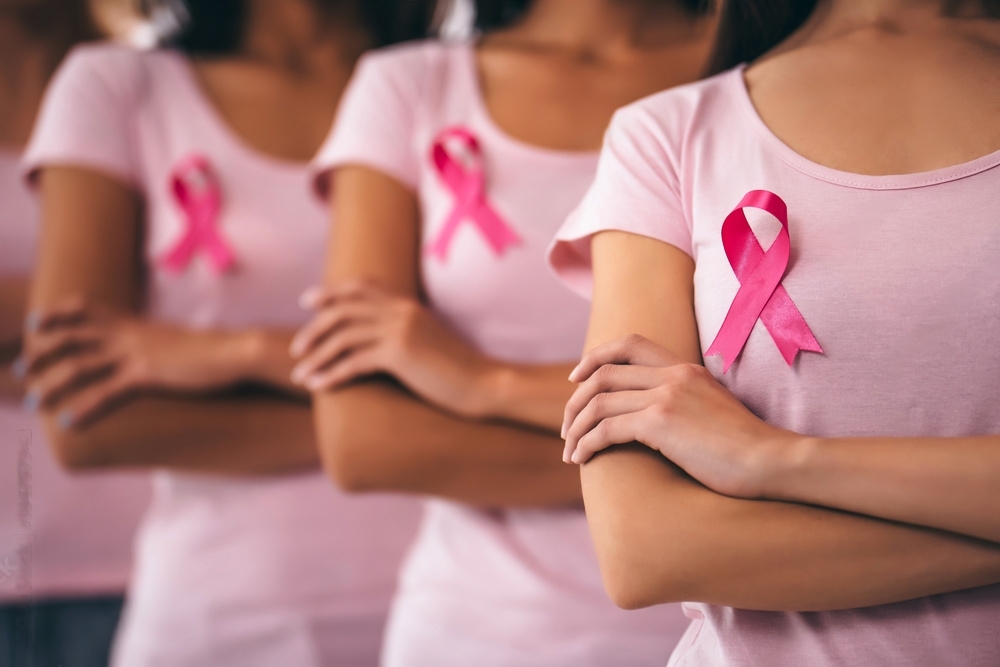
Breast cancer is yet to be devised as one of the most common cancers of all time for our women across the globe. However, these procedures box breast cancer occurrences into this traditional, definitive method of treatment with procedures like chemotherapy and mastectomy. While advances in medical science continue to occur, in this context, several non-surgical solutions are arising, and they provide patients with more choices regarding curing.
1. Understanding Breast Cancer

To effectively understand all the non-surgical treatments, we must first fully understand the descriptive image of breast cancer. What breast cancer stands for is the process when the body’s cells in the breast keep growing disorderly. All these types of breast cancer exist: ductal carcinoma in situ (DCIS), invasive ductal carcinoma (IDC), and invasive lobular carcinoma (ILC). Knowing the exact kind and level of breast cancer helps us apply the treatment that will work best.
2. Traditional Treatments vs Non-Surgical Approaches

Historically, surgery has been the main treatment proposed for breast cancer, but patients have a variety of choices to choose from. However, non-surgical procedures offer solutions to all, especially those who do not need surgery due to health problems or perhaps personal feelings. Through the comparison of the pros and cons of the traditional and non-operative treatments that patients receive, they are in a position to make informed choices about their care.
3. Non-Surgical Treatment Options:

Non-operative strategies involve commonly different groups of techniques intended to stop the process of the replication and migration of cancer cells. These measures can be divided into three groups: chemotherapy, radiation therapy, and hormone therapy, as well as targeted therapy. In contrast to the surgical technique, which literally cuts out the cancerous tissue and cells present in the body, non-surgical treatments are more useful, especially for breast cancer, which has spread to other parts and organs of the body.
4. Diet and Nutrition

Maintaining a balanced diet that is rich in vitamins and minerals should be one of your main priorities to have a healthy life, even after breast cancer treatment. Among others, some foods like fruit, vegetables, whole grains, and lean proteins are able to provide immunity-building vitamins and minerals through the strengthening of the defense system and resilience of the body. Also, junk foods and alcohol could be part of the food you ingest on a daily basis and must be limited in order to avoid a second cancer occurrence.
5. Exercise and Physical Therapy

A systematic review of research by well-established rides has proven the fact that using suitable training methods for breast cancer patients accelerates the overall outcome of the exercise, which consequently leads to the idea of improved physical functioning, reduced fatigue, and enhanced general well-being of the patients. Being involved in walking, swimming, or yoga can be a good remedy that will certainly lessen the treatment-related side effects and add a smile to your face. This will improve your mood and make you vigorous once more. Applying physiotherapy tactics, including how to control lymphedema, can be even more helpful for recovery after the treatment is over.
6. Medication and Targeted Therapy

In some cases, drugs act in combination with other cancer treatments to treat breast cancer. An illustration may be given in this case, too, as hormone therapy is frequently used for localization of hormone receptors in breast cancer that may be estrogen-sensitive. These therapies, directed towards specific receptors such as HER2, rather than the generic ones attacking all cancer cells and killing normal tissues as well, are proof that they fare better with fewer side effects.
7. Immunotherapy

Immunotherapy is a contemporary remedy that enables cancer patients to control their immune systems to beat the disease. In particular, the drug causes the immune system to react against cancer cells, resulting in fewer tumors and the prevention of their spreading. Despite the fact that it is still in its preliminary phase for treating breast cancer, research in this domain suggests that immunotherapy can be an option in the future for non-surgical treatment.
8. Alternative and Complementary Therapies

Besides the conventional, mainstream medical treatments for breast cancer, many patients often resort to alternative or complementary therapies for cancer treatment, symptom management, and better wellbeing. For example, studies in acupuncture, massage, and mindfulness meditation have expanded in scope over time since most of their main strengths have been demonstrated to be the ability to ease discomfort, mitigate stress, and build emotional resilience during the cancer treatment process.
9. Lifestyle Changes

For example, making more appropriate lifestyle choices and being consistent with them may contribute to drug therapy and keep a patient healthy and happy in many ways. Stopping smoking, maintaining a healthy weight, and stress management utilizing breathing techniques and/or counseling also count among the steps that lead to better treatment outcomes and longer wear. Interacting with others and getting help from loved ones or through support groups can additionally provide both the physical and mental support people need as they go through a cancer journey.
10. Supportive Care and Survivorship

However, after the initial treatment stage, the survivors will possibly face long-lasting difficulties in their physical, emotional, and mental wellness. For the betterment of available support services, which can include survivorship programs, rehabilitation services, counseling, or others, they can be as helpful as they can be in guiding individuals through life beyond cancer treatment and helping them resolve any remaining problems. Through taking on the identity of a survivor and consulting friends, familiar places, and other ways of getting help, patients can embark upon the road of recovery and rejuvenation.
Conclusion
Surgery was and is accepted as the main procedure in treating breast cancer, but non-surgical methods gave rise to new effective and non-invasive treatments that allow patients to better handle their struggles. Through both diet and exercise, as well as prescription-based therapies and supportive care, the breast cancer treatment field is not static, offering hope and healing to individuals afflicted with this disease. Through investigating the broad spectrum of alternative approaches in which patients can proactively participate in the management of their condition, patients can begin their journey to a new life with improved health and enhanced well-being.
FAQs for 10 Powerful Ways to Cure Breast Cancer Without Surgery
What are the traditional treatments for breast cancer?
Traditional treatments often include surgical options like mastectomy and chemotherapy. These methods have been the standard approach for many years.
What are non-surgical treatment options for breast cancer?
Non-surgical treatments include:
- Chemotherapy
- Radiation therapy
- Hormone therapy
- Targeted therapy
What is immunotherapy?
Immunotherapy is a newer treatment that stimulates the immune system to attack cancer cells, potentially leading to reduced tumor size and spread. Research is ongoing for its effectiveness in breast cancer.
Are there alternative therapies available?
Yes, alternative therapies like acupuncture, massage, and mindfulness meditation can help manage symptoms and reduce stress during treatment.
How can lifestyle changes impact treatment outcomes?
Making healthy lifestyle choices, such as quitting smoking, maintaining a healthy weight, and managing stress, can improve treatment results and overall well-being.
What is supportive care?
Supportive care includes services that help survivors cope with the long-term effects of cancer treatment, such as counseling, rehabilitation, and survivorship programs.
How can I prepare for non-surgical treatments?
Consult with your healthcare team to understand the treatment plan, potential side effects, and ways to support your recovery through diet, exercise, and mental health care.









Leave a Reply